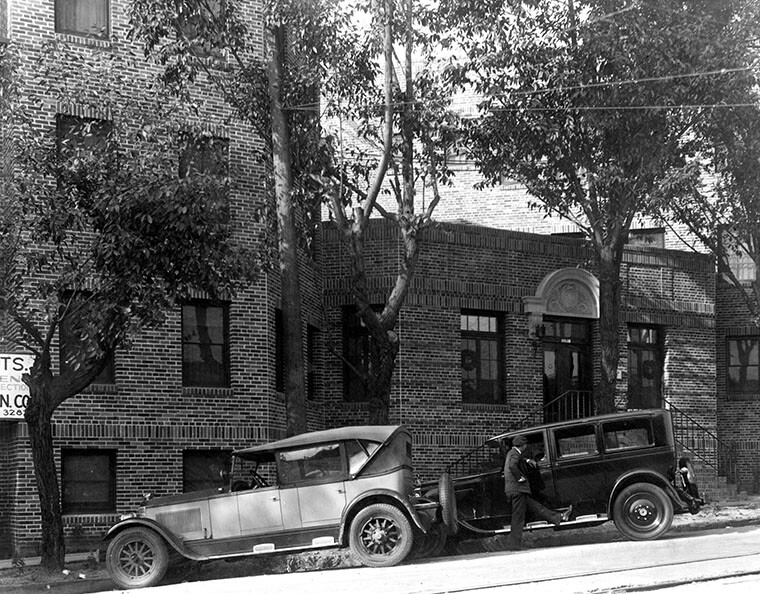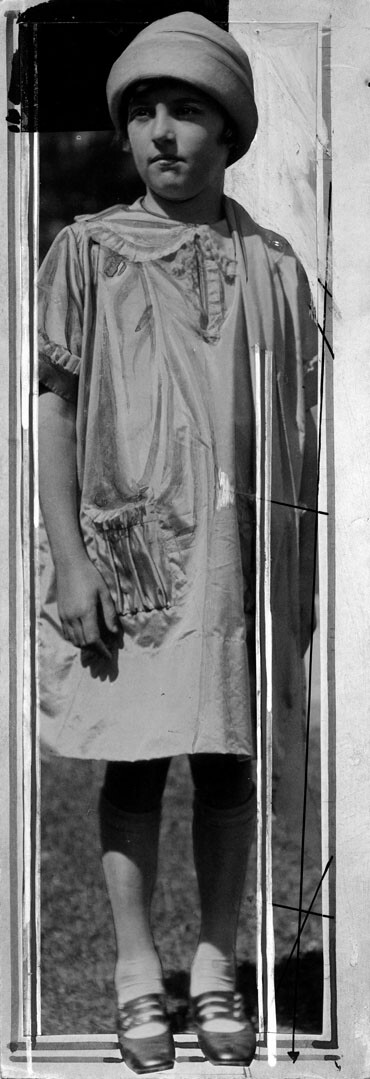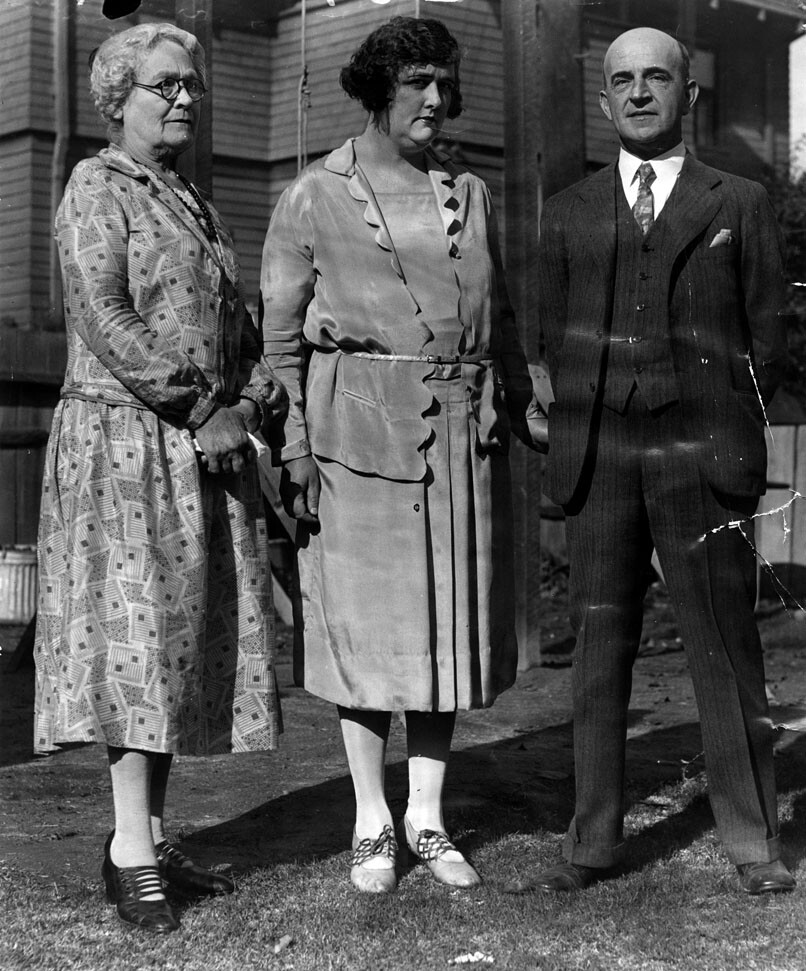Bedlam at Bellevue Arms: Murder and Madness in Angelino Heights

Angelino Heights is an odd little neighborhood. Old market buildings, charming Victorian homes, and wood frame homes in all states of repair sit high on a hill, cut off from the badlands by the buzzing 101 Freeway. Walking around the quiet streets, I felt like I had stepped into a small village, although that couldn't be further from the truth -- I was actually in the heart of Los Angeles, minutes from downtown. I stood in front of what is now called the Brownstone Lofts, an imposing red brick apartment building that seems too massive for its quaint surroundings. Two young people went up the steps and disappeared into the sterile, recently renovated lobby. Otherwise, it was just the UPS guy, me, and a couple of stray cats. It was pretty hard to believe that within this gentrified building, where one-bedroom apartments go for over $2,000 a month, the grisliest, strangest murder I've ever researched took place. Adding to the strangeness, for reasons that will soon become apparent, is the fact that just down the road, there is a little street called Marion Avenue.
Manhunt
P.M. Parker: Fox is my name. Very sly you know. Set no traps. I'll watch for them...Get this straight! Remember that life hangs by a thread and I have Gillette [razor] ready and able to handle the situation. Do you want the girl or the 75 $20 gold certificates U.S. Currency? You can't have both and there's no other way out. Believe this, and act accordingly. Before the days over I'll find out where you stand. I am doing a solo, so figure on meeting the terms of Mr. Fox or else.-Fate.
Please Daddy; I want to come home this morning. This is your last chance. Be sure and come by yourself or you won't see me again.- Marian
It was Thursday, December 15th, 1926. It was a relaxed, pre-vacation day at Mount Vernon Middle School in Los Angeles, a day filled with holiday parties and Christmas programs. At around 12:30 p.m., a good looking young man, with dark oily hair and a "well educated" air, strolled into the school office. He introduced himself as Mr. Cooper, and said that he worked for First National Bank downtown. Perry Parker, the chief clerk at the bank, had been in a serious auto accident. Parker was asking for his "younger daughter," and he had been sent to fetch her. At first, the secretary and teacher in the front office were confused -- Parker had two children at the school -- 12-year-old twin girls named Marjorie and Marian. Why would he specify that he wanted the younger one?

Cooper was "quiet and courteous," and said the women were more than welcome to call the bank. They declined and pulled an excited Marian, the youngest twin, out of her classroom's Christmas celebration. Her father later recalled:
Marian was just a healthy, normal sort of child. What some might call "tomboyish." She was full of life and play all the time. The child had her own mind, too, but her two main attractions seemed always to be her parents and her schoolwork.
Although she did not know Mr. Cooper, Marian was eager to comfort her father. In an act unthinkable today, school secretary Naomi Britten let her go with the stranger. Marian got into the man's car and vanished into the California sunshine.
Marjorie came home from school alone, unaware of where her sister had gone. Her mother, Geraldine, began to fret, wondering where Marian was. When Perry Parker got home, he opened a telegram that had been sent to him:
Do positively nothing till you receive special delivery letter, Marian Parker
Another telegram arrived shortly after. It read:
Interference with my plans dangerous George Fox
The family called the police. Soon a long letter arrived. Headed with the word death, the missive stated, "Use good judgement. You are the loser." It instructed Parker to obtain a relatively paltry 75 $20 gold certificates and to "leave out the police and detectives." Failure to comply would mean "no one will ever see the girl again except the angels in heaven." It was signed "Fate," and included a heartbreaking postscript in Marian's hand. Over subsequent communications, an exchange was planned for the next evening at Tenth and Gramercy. Parker (who unbeknownst to him had been followed by police) arrived at the agreed upon time, the requested money in his pocket. But the kidnapper never showed up. And Marian remained missing.
On Saturday, December 17th, 1927, the story exploded in the L.A. press. Descriptions of Marian, the stranger, and the dark coupe he had driven were everywhere. The Los Angeles Times reported breathlessly:
Search [continues] for Marian Parker, 12 years of age, kidnapped Thursday from the Mt. Vernon Junior High School by a criminal for whom hundreds of peace officers are conducting one of the greatest manhunts in the history of Southern California...Officers in all towns and cities of Southern California have centered their attention on the strange case...All arms of the law are cooperating in the tremendous manhunt.

That morning, Parker received another letter, this time signed by Fate-Fox. The Fox was furious, having spotted the cops staking out the drop off. He would give Parker one last chance, warning, "I will be two billion times as cautious, as clever, and as deadly from now on. You have brought this on yourself and deserve it and worse."
The worst was coming. A second meeting was arranged over the phone, this time at Fifth and Manhattan Place. Parker sat tensely in his parked car, waiting for his little girl. Around 8:15pm, a dark Ford pulled next to him. The man in the car had a kerchief around his face so that his features could not be seen. He pointed a shotgun into Parker's car. He then asked for the money. "Where's Marian?" Parker asked.
"Right here," the kidnapper said. "She's asleep." The man lifted something in the passenger seat, and Parker momentarily saw the face of his child. Parker leaned out of the car and gave the man the $1,500. The kidnapper told him to wait a minute and he drove slowly down the street to 432 Manhattan Place. He pushed something out of the passenger door and then sped off. According to Parker:
I followed, up to where he had stopped, there, looking for her, and I expected she would be lying on the parkway. I could not see anything at all, and then I saw some kind of bundle of trash in the gutter which, upon closer view, I saw was my girl. I could see her white face, and I stopped and picked her up...the body was not complete.
Marian was dead. Her body was wrapped in a blanket. Her eyes had been crudely sewn open to give the appearance of life. To make matters more horrific, when her father removed the blanket he discovered that his daughter's limbs and hips had been hacked off. A maniac was loose on the streets of Los Angeles.

The Best Boy
"It is a terrible mistake. This crime is the work of a great fiend. My boy is a good, clean boy. I'll never believe it until I hear it from his own lips. - Eva Hickman
The discovery of Marian's mutilated body (subsequent body parts were found scattered in Elysian Park) became a national horror story, and sent Angelenos into an understandable panic. Fortuitously, Marian's pitiful remains would help lead to her killer. The coroner found a towel stuffed in her abdomen marked Bellevue Arms. This and other clues led police to settle on a suspect -- a 19-year old baby-faced man from Kansas City named William Edward Hickman. Since November, Hickman (using an alias) had been renting room 315 at the newly opened Bellevue Arms.
Despite his angelic appearance, Hickman was a sociopath of the first order, with a string of crimes already under his young belt. Hickman was raised in Arkansas and Kansas by a family plagued by mental illness and instability. The fatherless boy was one of the top students in his high school class, with many friends and mentors. He was even voted "best boy orator," and seemed to be college-bound. But around the time of his senior year, all that abruptly changed. In 1926, Hickman and a 16-year old named Welby Hunt came to Alhambra to live with Hunt's grandparents. They began a spree of robberies, which would culminate with the Christmas Eve murder of a druggist named Clarence Ivy Thoms. (They also may have been responsible for the suspicious suicide of Hunt's grandfather). They were not caught, and Hickman soon began working as a page at First National Bank. He was soon caught stealing money from the bank, convicted and sent home to Kansas with his mother, Eva.
Hickman did not stay in Kansas for long. He went on a crime spree, holding up stores and carjacking unsuspecting passengers all over the Midwest. By November 1926, he was back in Los Angeles, and only a month later, Marian Parker was dead.
Hickman was formally charged with the kidnapping of Marian on Tuesday, December 20th. But he was nowhere to be found. The west coast went on lockdown -- traffic stops were conducted up and down the coast, and Hickman's photos and physical description were plastered on the front page of every paper. The serial numbers of the gold certificates he had gotten from Parker were read out over the radio, and sent to stores. A $60,000 reward was offered for his capture. If you were a good looking young man with wavy black hair -- you were in trouble. Many men were arrested multiple times. A man named Michael O'Neil was held five times, another seven, and one felt so harassed that he hung himself when he was taken to jail. According to the Los Angeles Times:
A near riot occurred in front of the police station yesterday when it was reported that Hickman had been arrested. The report traveled like wildfire through the downtown section and in a few minutes hundreds jammed in front of headquarters...eager to catch a glimpse of the man accused of the horrible deed. The crowd was dispersed when it was announced Hickman had not been caught.
Hickman was on the run in a stolen coupe. But his luck ran out on Thursday, December 22nd, in Seattle, where he stupidly used one of the gold certificates to purchase a coat and other cold weather accoutrements. The suspicious clothier matched the certificate's serial number with one that had been read on the radio. Police finally arrested Hickman outside Pendleton, Oregon, after a short chase. When confronted with his real name, Hickman reportedly shrugged and said, "I guess it's all over."
Parents all over America breathed a sigh of relief. When reached for comment, Perry Parker summed up his feelings in three short words: "I am thankful."

Crazy Like a Fox
There is something ghastly about a dead eye. It is even more penetrating than a live eye. - William Edward Hickman
From the moment of his arrest, the public clamored to see the baby-faced killer. He was paraded in front of spectators at the Pendleton jail, and interviewed by countless reporters. Hickman couldn't keep his mouth shut and seemed to love to bask in the spotlight. On December 27, 1927, Hickman, District Attorney Keyes, and other major law enforcement officers boarded a special train to Los Angeles. Hickman gave a detailed confession. He said he had planned the kidnapping as a way to get $1,500 so he could enroll in college in the fall.
Hickman explained how he had come to know of Marian when he was working at the bank. According to Hickman, Marian was often with her father, who "would take her down and buy her lunch and she was around the bank like she was a big man." He had nothing personally against Parker, and had not planned on killing Marian. In fact, he "liked" her. He explained that he had strangled her in his apartment on December 17th, because he was "afraid she would make noise." Hickman had then cut her up in his bathtub so he could dispose of her. He had sewn open her eyes so he could still get the ransom money.

The most hardened officials were unnerved by Hickman. Even seasoned reporters were freaked out by the teenage killer. A reporter for the L.A. Times recalled an eerie scene on the train:
At one of the mountain stations he gazed through the window at an assembled crowd. He waved at a little tow-headed girl on the platform. The wave and sneering smile affected the child and she ran hastily to her mother a few steps away.
In jail, Hickman realized the reality of his situation. He occasionally attempted to "play crazy," and would then just as quickly act perfectly rational. He wrote a rambling tract called "Solution of Crime," which essentially tried to con the state into sparing his life for the good of humanity. At his trial, he pleaded "not guilty, by reason of insanity," the first person in California to use this newly sanctioned defense. He claimed that "providence" had forced him to kill Marian. It didn't work. Hickman was sentenced to hang, and sent to San Quentin. (In a subsequent trial, he and Welby Hunt was also convicted of the murder of Clarence Ivy Thoms). He converted to Catholicism and continued his creepy ways, writing letters to media outlets around the country. Right before he was hanged, he told a prison guard the real reason he had killed Marian:
I got tired of finding her in the room where I kept her while I was trying to get ransom money. It got so that the sight of her face drove me into a frenzy, and I began figuring out that I was a fool to be annoyed... I was a scoffer at God I guess. Talk about bad judgement! Why instead of kidnapping and killing her, I could have robbed a bank, got ten times that much money, and would have suffered far less serious consequences when captured.
Hickman was executed on October 19, 1928. There would be more famous kidnappings to come, including the Lindbergh baby case. But, Marian's haunting story stayed in the public imagination and became part of pop culture. A popular folk song of the time would be sung for years after she died. One version ended with the following lines:
There is a great commandment
That says, "Thou shalt not kill"
And those who do not heed it,
Their cup of sorrow fill.

Further Reading: Stolen Away: The True Story of California's Most Shocking Kidnapmurder, by Michael Newton.


